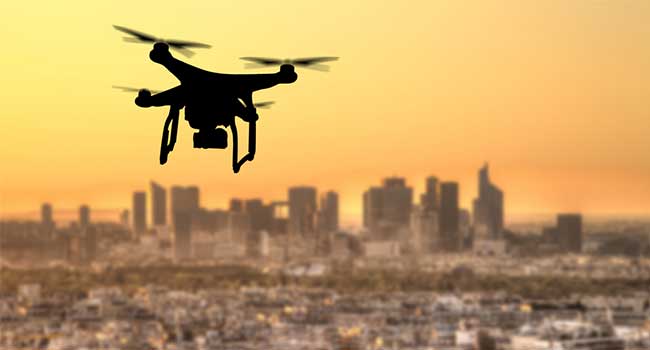By Steve Tomaselli
 Last summer, fans at a San Diego Padres baseball game caught a glimpse of the future when a drone crashed into the stands. Thankfully, the operator was a hobbyist who had lost control of his drone and nobody was hurt. But the incident highlighted the drone threat, both in terms of a potential physical attack as well the capability to gather video surveillance and livestream it online, where malicious actors can exploit that footage in a number of ways.
Last summer, fans at a San Diego Padres baseball game caught a glimpse of the future when a drone crashed into the stands. Thankfully, the operator was a hobbyist who had lost control of his drone and nobody was hurt. But the incident highlighted the drone threat, both in terms of a potential physical attack as well the capability to gather video surveillance and livestream it online, where malicious actors can exploit that footage in a number of ways.
In a recent report, Goldman Sachs estimated that the total drone market could reach $100 billion by 2020. And while we tend to think of drones as tools for the military, commercial aviation and hobbyists, the reality is that drones play significant roles in every sector of the economy, from agriculture to entertainment and everything in between. For security professionals, the scope of the threat is huge and evolving.
Any space that is accessible via drone requires a counter-drone protection plan to detect and mitigate potential airborne threats. These spaces can include sporting stadiums, critical infrastructure, airports, production facilities, prisons and executive offices, to name just a few. As a general rule, if you can see the sky, you need to assume that a drone can see you and assess the potential threat accordingly.
A drone security plan should include at least three components: radar detection, physical defense and open-source monitoring. Radar detection and physical defense systems, such as radio jammers and drone cannons that capture drones by launching a net projectile, provide a great solution to mitigate imminent threats. This is critical because as 2015 incident illustrates, a tech-savvy teenager figured out how to mount a handgun to a drone and fire it remotely. Had that weaponized drone been directed at a commercial, residential or industrial target, it surely could have caused significant casualties.
No comments:
Post a Comment